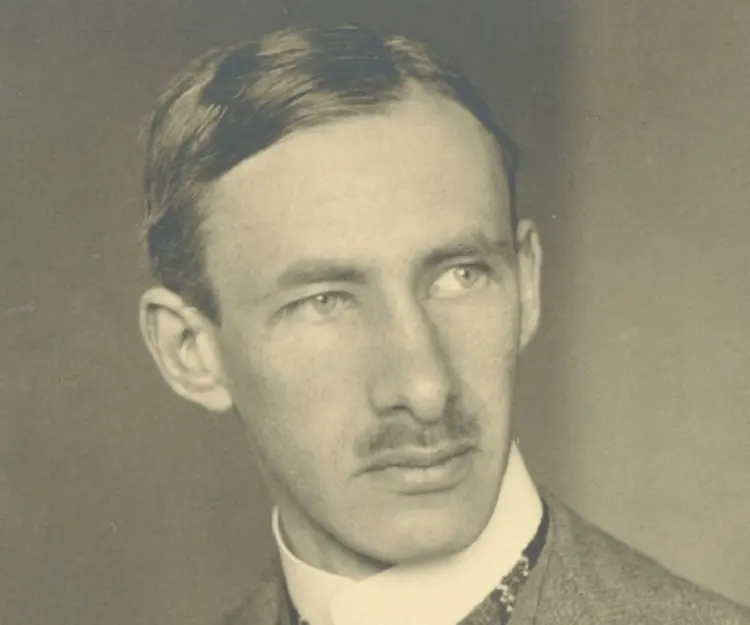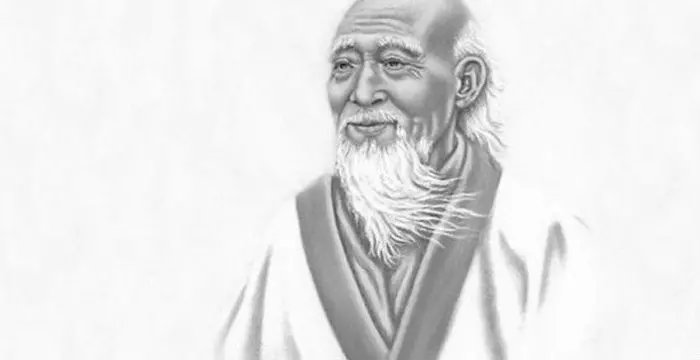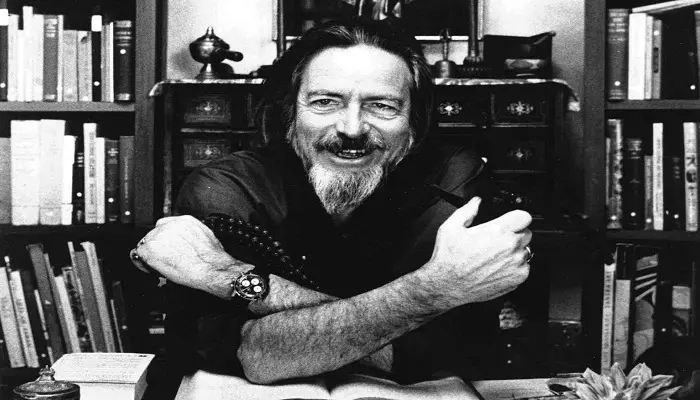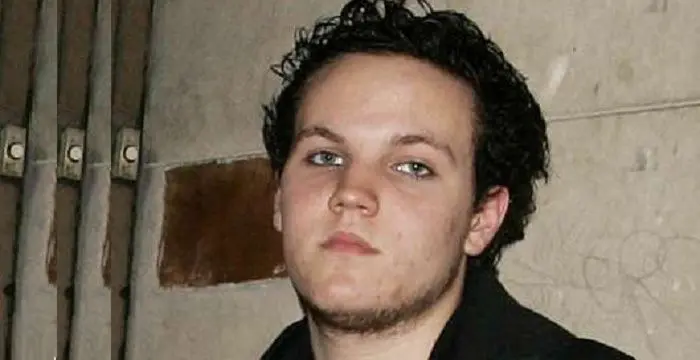
Paul Bernays - Philosophers, Timeline and Childhood
Paul Bernays's Personal Details
Paul Isaac Bernays was a famous Swiss mathematician who developed a new discipline of mathematical logic
| Information | Detail |
|---|---|
| Birthday | October 17, 1888 |
| Died on | September 18, 1977 |
| Nationality | Swiss |
| Famous | Intellectuals & Academics, Philosophers, Mathematicians |
| Universities |
|
| Birth Place | London |
| Gender | Male |
| Sun Sign | Libra |
| Born in | London |
| Famous as | Mathematician |
| Died at Age | 88 |
// Famous Mathematicians
Grigori Perelman
Grigori Perelman is a Russian mathematician who is best known for his contributions to Riemannian geometry and geometric topology. Check out this biography to know about his childhood, family life, achievements and fun facts about him.
Terence Tao
Terence Tao is an Australian- American mathematician who has contributed enormously to the field of mathematics. Check out this biography to know about his childhood, family life and achievements.
Isaac Newton
Isaac Newton was an English scientist and mathematician, who discovered gravitation and Newtonian Mechanics. Read this biography to find more on his life.
Paul Bernays's photo
Who is Paul Bernays?
Paul Isaac Bernays was a famous Swiss mathematician who made noteworthy contributions to the philosophy of mathematics and developed a new discipline of mathematical logic. Foremost among his work was the proof theory and the axiomatic set theory. Born in London, he grew up in Paris and Berlin. As a child, he showed a keen interest in music as well as ancient languages and mathematics. In college, he majored in mathematics and also studied philosophy and theoretical physics as additional subjects. At the age of 24, he received his doctoral degree in mathematics from the University of Berlin. He also obtained his Habilitation from the University of Zurich and became a Privatdozent there. Soon, he joined David Hilbert as his research assistant in investigating the foundations of arithmetic. Eventually, he was awarded the Venia Legendi at the University of G¨ottingen but lost the post during Second World War due to his Jewish ancestry. He finally moved to Switzerland where he taught at the Eidgen¨ossische Technische Hochschule, Z¨urich. He is best remembered for his joint two volume work ‘Grundlagen der Mathematik’ (1934-39) with Hilbert, and his Axiomatic Set Theory which was published in 1958.
// Famous Philosophers
Martin Buber
One of the greatest philosophers to have ever walked on earth, Martin Buber contributions to philosophy is a long-standing one. Explore all about his profile, childhood, life and timeline here.
Lao Tzu (Laozi)
Lao Tzu was a legendary Chinese philosopher who wrote the important “Daodejing”. This biography profiles his childhood, life, career, achievements and timeline.
Alan Watts
Alan Watts was a famous British philosopher known for his Zen teachings and interpretations of Eastern philosophy. Read more about this great philosopher in the following article.
Childhood & Early Life
Paul Bernays was born on October 17, 1888 in London. He was the son of Julius Bernays, a Swiss businessman, and Sarah Brecher. He had a happy childhood growing up with a younger brother and three younger sisters.
From 1895 to 1907, he studied at the K¨ollnisches Gymnasium. He demonstrated a keen interest in music and became an immensely talented pianist. He later explored his talent in composing music as well.
He also studied at the Technische Hochschule Charlottenburg for about half a year. During his school life, he also enjoyed studying ancient languages and mathematics.
After school, he joined the University of Berlin where he studied for four semesters primarily under Issai Schtur, Landau, Frobenius, and Schottky in mathematics; Riehl, Stumpf, and Cassirer in philosophy, and Max Planck in physics.
Subsequently, he studied at Gottingen for six semesters, majoring in mathematics and studying philosophy and theoretical physics as additional subjects. He attended lectures on mathematics mainly by Hilbert, Landau, Weyl and Klein; on physics by Voigt and Born, and on philosophy chiefly by Leonard Nelson.
Career
In 1912, Paul Bernays received his Ph.D. in mathematics from the University of Berlin. His doctoral dissertation on the analytic number theory of binary quadratic forms was completed under Landau.
Later that year, he obtained his Habilitation from the University of Zurich for a dissertation on complex analysis and Picard's theorem, completed under professor Zermelo.
He was a Privatdozent at the University of Z¨urich from 1912 to 1917. During this period, he became acquainted with Georg P´olya, Einstein, and Hermann Weyl.
In 1917, he was invited by Hilbert to assist him in his research of the foundations of arithmetic. The job took him back to Gottingen and he helped Hilbert in preparing lectures and notes.
Alongside, he also gave lectures on mathematics at the University of Gottingen, where he obtained the Venia Legendi in 1919.
1922 onwards, he became extraordinary professor without tenure at Gottingen. He also attended the lectures of, among others, Emmy Noether, van der Waerden and Herglotz, preferring to learn by listening rather than reading.
In 1933, he lost the Venia Legendi post at the University of Gottingen because of his Jewish ancestry. Hilbert hired him privately as his assistant for six months. Later, the family shifted to Switzerland.
In 1934, and several times later, he was employed at Eidgen¨ossische Technische Hochschule (ETH), Z¨urich in a provisional teaching position. In 1935-36, he gave lectures on mathematical logic and axiomatic set theory at the Institute for Advanced Study, Princeton.
In 1939, he received the Venia Legendi at the ETH and in 1945, he became extraordinary professor. He gave lectures on algebraic number fields, set theory, elliptic functions, geometrical constructions, the concept of number, elements of analysis, mathematical logic, the introduction of proof theory, lattice theory, the constitution of the continuum, etc.
He also continued to attend lectures and seminars given by intellectual colleagues and friends like Michel Plancheret, Beno Eckmann, Eduard Stiefel and Heinz Hopf.
He became acquainted with Ferdinand Gonseth and realized a similarity in viewpoint with him. Hence, he participated in several of Gonseth’s conferences and joined the editorial board of ‘Dialectica’.
He later became a member of the International Society for the Philosophy of Science, founded by Pere S. Dockx. He became its President for two years. From 1956t o 1965, he was invited thrice as visiting professor to the University of Pennsylvania, Philadelphia.
Major Works
Paul Bernays' partnership with Hilbert resulted in a two volume work, ‘Grundlagen der Mathematik’ (1934–1939). The work attempted to build mathematics from symbolic logic and a proof from it is now known as the Hilbert–Bernays paradox.
In seven papers published in the Journal of Symbolic Logic between 1937 and 1954, he embarked on the axiomatic set theory whose foundation was laid by John von Neumann in the 1920s. Bernays’ theory, with some alterations by Kurt Gödel later, came to be known as the Von Neumann–Bernays–Gödel set theory.
In 1956, he revised Hilbert’s ‘Grundlagen der Geometrie’ (1899) on the foundations of geometry. He believed that the whole structure of mathematics could be combined as a single logical entity.
Bernays research in proof theory and axiomatic set theory helped to produce a new discipline of mathematical logic. His axiomatic set theory was further developed by Kurt Gödel and is presently known as the Von Neumann–Bernays–Gödel set theory.
Personal Life & Legacy
Paul Bernays was of the Jewish faith and a citizen of Switzerland. He remained unmarried throughout his life and lived in Zürich with his mother and two unmarried sisters.
By nature, he was friendly and benevolent, helping several authors with their papers. He never passed judgement on others and always tried to see everything with positivity.
Even in his 80s, he remained active in research. He died of a heart condition on 18 September 1977, at the age of 88, in Zurich, Switzerland.
// Famous Intellectuals & Academics
Bertil Gotthard Ohlin
Bertil Gotthard Ohlin was a famous Swedish economist. This biography profiles his childhood, family life & achievements.
Emily Greene Balch
Emily Greene Balch was an American economist, sociologist and pacifist who won the 1946 Nobel Peace Prize. This biography of Emily Greene Balch provides detailed information about her childhood, life, achievements, works & timeline.
Martin Buber
One of the greatest philosophers to have ever walked on earth, Martin Buber contributions to philosophy is a long-standing one. Explore all about his profile, childhood, life and timeline here.
Paul Bernays biography timelines
- // 17th Oct 1888Paul Bernays was born on October 17, 1888 in London. He was the son of Julius Bernays, a Swiss businessman, and Sarah Brecher. He had a happy childhood growing up with a younger brother and three younger sisters.
- // 1895 To 1907From 1895 to 1907, he studied at the K¨ollnisches Gymnasium. He demonstrated a keen interest in music and became an immensely talented pianist. He later explored his talent in composing music as well.
- // 1899 To 1956In 1956, he revised Hilbert’s ‘Grundlagen der Geometrie’ (1899) on the foundations of geometry. He believed that the whole structure of mathematics could be combined as a single logical entity.
- // 1912In 1912, Paul Bernays received his Ph.D. in mathematics from the University of Berlin. His doctoral dissertation on the analytic number theory of binary quadratic forms was completed under Landau.
- // 1912 To 1917He was a Privatdozent at the University of Z¨urich from 1912 to 1917. During this period, he became acquainted with Georg P´olya, Einstein, and Hermann Weyl.
- // 1917In 1917, he was invited by Hilbert to assist him in his research of the foundations of arithmetic. The job took him back to Gottingen and he helped Hilbert in preparing lectures and notes.
- // 1919Alongside, he also gave lectures on mathematics at the University of Gottingen, where he obtained the Venia Legendi in 1919.
- // 19221922 onwards, he became extraordinary professor without tenure at Gottingen. He also attended the lectures of, among others, Emmy Noether, van der Waerden and Herglotz, preferring to learn by listening rather than reading.
- // 1933In 1933, he lost the Venia Legendi post at the University of Gottingen because of his Jewish ancestry. Hilbert hired him privately as his assistant for six months. Later, the family shifted to Switzerland.
- // 1934 To 1935In 1934, and several times later, he was employed at Eidgen¨ossische Technische Hochschule (ETH), Z¨urich in a provisional teaching position. In 1935-36, he gave lectures on mathematical logic and axiomatic set theory at the Institute for Advanced Study, Princeton.
- // 1934 To 1939Paul Bernays' partnership with Hilbert resulted in a two volume work, ‘Grundlagen der Mathematik’ (1934–1939). The work attempted to build mathematics from symbolic logic and a proof from it is now known as the Hilbert–Bernays paradox.
- // 1937 To 1954In seven papers published in the Journal of Symbolic Logic between 1937 and 1954, he embarked on the axiomatic set theory whose foundation was laid by John von Neumann in the 1920s. Bernays’ theory, with some alterations by Kurt Gödel later, came to be known as the Von Neumann–Bernays–Gödel set theory.
- // 1939 To 1945In 1939, he received the Venia Legendi at the ETH and in 1945, he became extraordinary professor. He gave lectures on algebraic number fields, set theory, elliptic functions, geometrical constructions, the concept of number, elements of analysis, mathematical logic, the introduction of proof theory, lattice theory, the constitution of the continuum, etc.
- // 1965He later became a member of the International Society for the Philosophy of Science, founded by Pere S. Dockx. He became its President for two years. From 1956t o 1965, he was invited thrice as visiting professor to the University of Pennsylvania, Philadelphia.
- // 18th Sep 1977Even in his 80s, he remained active in research. He died of a heart condition on 18 September 1977, at the age of 88, in Zurich, Switzerland.
// Famous Libra Celebrities peoples
Melissa Brim
Melissa Brim is the ex-girlfriend of former professional boxer Floyd Mayweather Jr. Check out this biography to know about her birthday, childhood, family life, achievements and fun facts about her.
Jacob Tremblay
Jacob Tremblay is a Canadian child actor. Let’s have a look at his family & personal life including age, birthday, relationships, net worth and fun facts.
Sierra Furtado
Check out all that you wanted to know about Sierra Furtado, the famous YouTube Personality; her birthday, her family and personal life, her boyfriend, fun trivia facts and more.
Sexxy Lexxy
Alexis Smith Walker, popularly known as Sexxy Lexxy, is an African-American singer. Check out this biography to know about her birthday, childhood, family life, achievements, and fun facts about her.
Benjamin Keough
Benjamin Keough is an American socialite who is best known as the grandson and look-alike of legendary musician Elvis Presley.
Lizzie LDShadowLady
Check out all that you wanted to know about Lizzie LDShadowLady, the famous YouTuber and gamer; her birthday, her family and personal life, her boyfriend, fun trivia facts and more.
Paul Bernays's FAQ
What is Paul Bernays birthday?
Paul Bernays was born at 1888-10-17
When was Paul Bernays died?
Paul Bernays was died at 1977-09-18
Where was Paul Bernays died?
Paul Bernays was died in Zürich
Which age was Paul Bernays died?
Paul Bernays was died at age 88
Where is Paul Bernays's birth place?
Paul Bernays was born in London
What is Paul Bernays nationalities?
Paul Bernays's nationalities is Swiss
What was Paul Bernays universities?
Paul Bernays studied at Humboldt University of Berlin, University of Göttingen
What is Paul Bernays's sun sign?
Paul Bernays is Libra
How famous is Paul Bernays?
Paul Bernays is famouse as Mathematician














